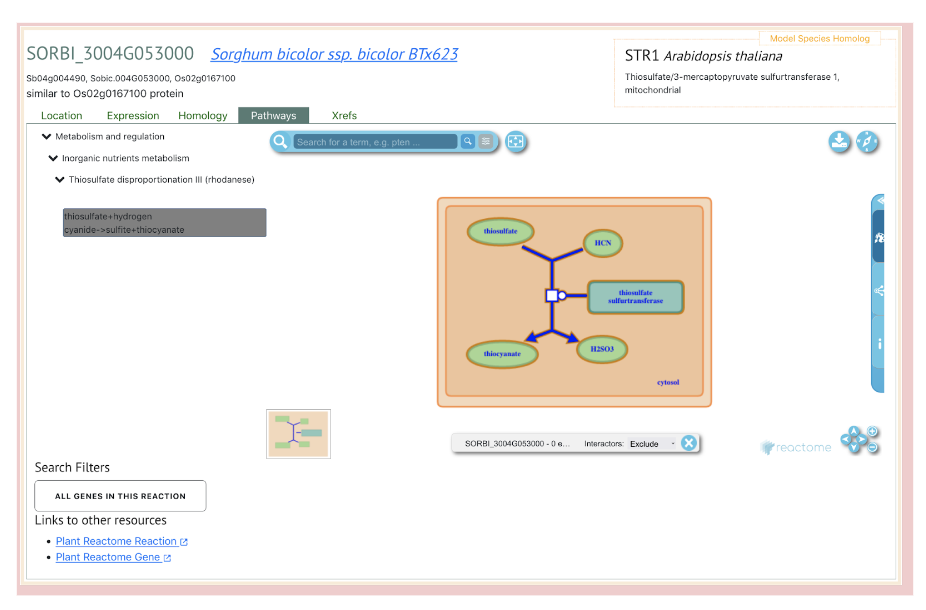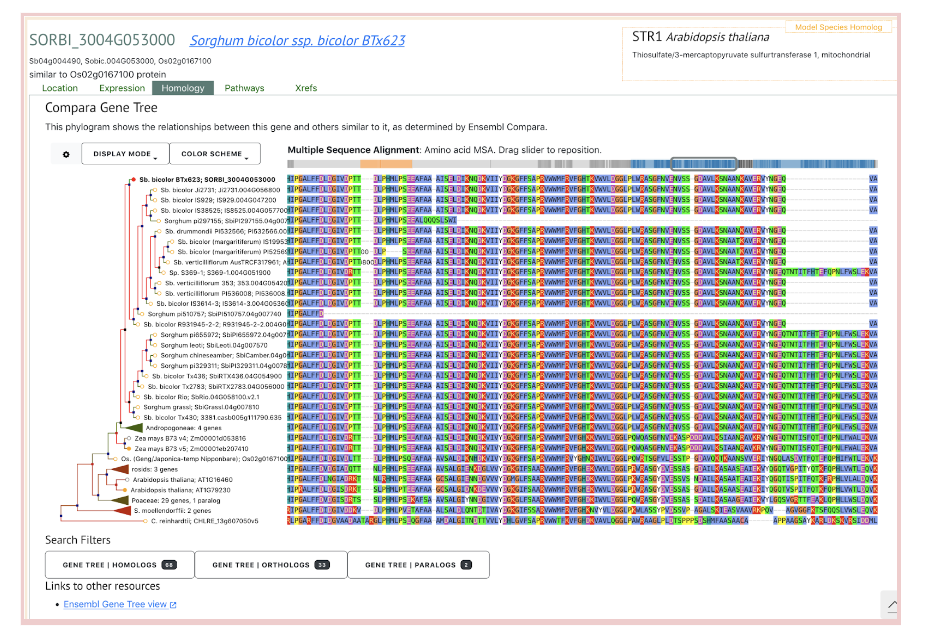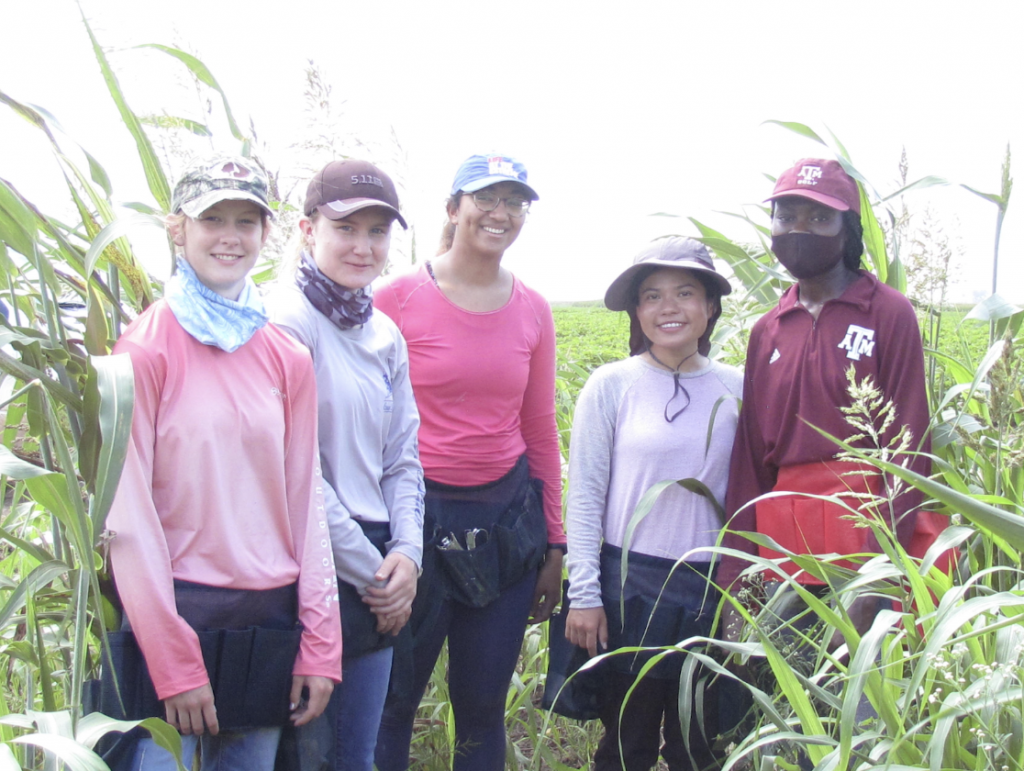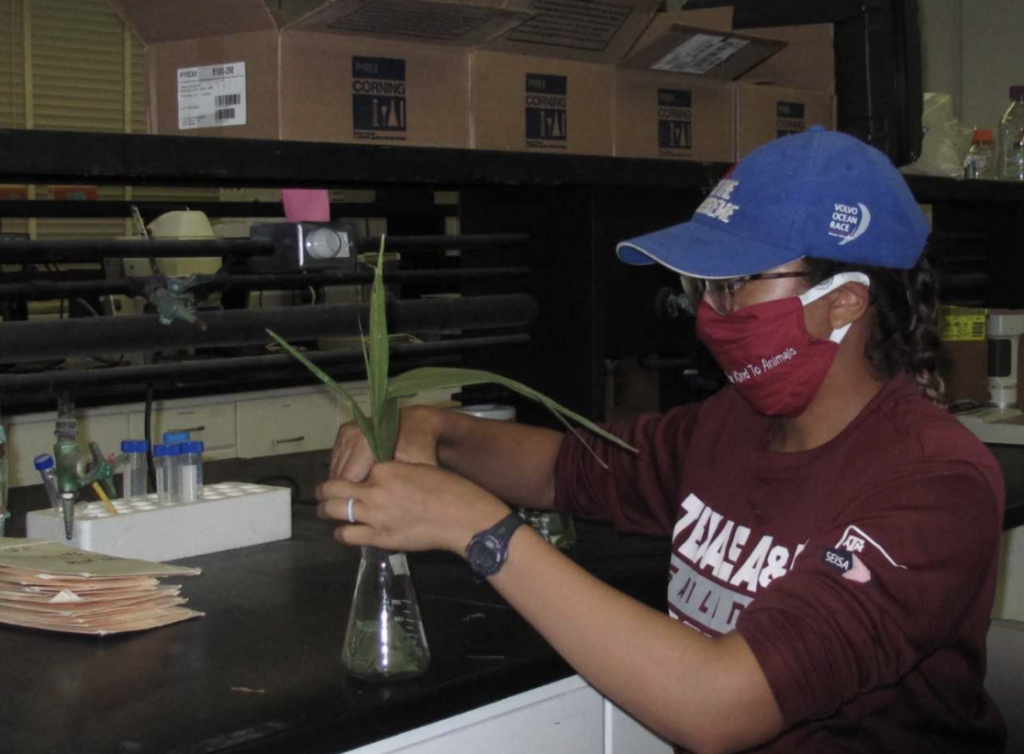Sorghum is a source of forage for animals globally. Most lines produce the cyanogenic glucoside dhurrin above the soil line. Biotic and abiotic stresses result in enzymatic reactions resulting in the dhurrin producing hydrogen cyanide (HCN), which, in large amounts, is toxic to livestock. In order to genetically select for lower levels of hydrogen cyanide potential (HCN-P), a more cost-effective method to measure its quantity in sorghum is needed. Scientists from Texas A&M University and The Land Institute developed a colorimetric assay that is fast and inexpensive and can both measure the HCN-P and allow comparison with existing visual assays. Using both their colorimetric assays and visual color assessment Nakasagga et al. evaluated the HCN-P of 100 interspecific sorghum lines over the course of two years. They found the visual assessment to underestimate the HCN-P and be less accurate overall. Although when seasons were compared the reliability was low, suggesting refinement of the technique is necessary, the method shows promise in its high throughput and low cost. The researchers note that perennial sorghum lines have significantly more HCN-P than annual ones, supporting the fact that this trait would be a good target for genetic selection. The interaction between environmental factors and the genetic pedigree resulted in different effects for different conditions. In addition, the scientists noticed that the growth stage had a great influence on the HCN-P which is important for those using fresh forage to feed livestock.
SorghumBase Examples:


Reference:
Nakasagga S, Murray SC, Rooney WL, Barr C, Nabukalu P, Cox S, Hoffmann L Jr. Genetic variation in hydrogen cyanide potential of perennial sorghum evaluated by colorimetry. Plant Direct. 2022 Oct 21;6(10):e448. PMID: 36284735. DOI: 10.1002/pld3.448. Read more
Related Project Websites:
William Rooney page at Texas A&M University https://soilcrop.tamu.edu/people/rooney-william/

